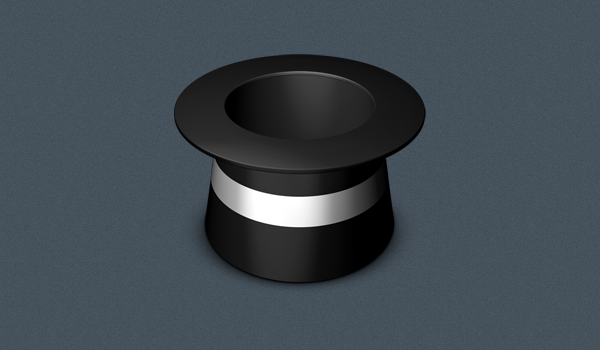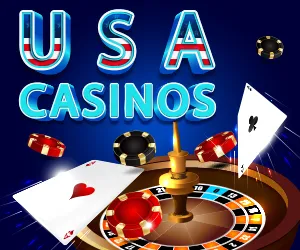Kristin Luna
Mojitos? Sake? Every country has one
Prost! Skål! Salud! Cheers!
You know how to toast in a myriad of different languages, but do you know the significance behind that drink you’re downing and, more importantly, what it’s made of?
While it may be just another way of reaching a blissful state of transitory intoxication to you, that liquor you’re drinking actually has quite a bit of history behind it. Believe it or not, both politics and agriculture play vital roles in the background of different countries’ alcoholic beverages...
Mojitos? Sake? Every country has one
Prost! Skål! Salud! Cheers!
You know how to toast in a myriad of different languages, but do you know the significance behind that drink you’re downing and, more importantly, what it’s made of?
While it may be just another way of reaching a blissful state of transitory intoxication to you, that liquor you’re drinking actually has quite a bit of history behind it. Believe it or not, both politics and agriculture play vital roles in the background of different countries’ alcoholic beverages...
Kristin Luna Mojitos? Sake? Every country has one Prost! Skål! Salud! Cheers! You know how to toast in a myriad of different languages, but do you k... more

516
CURRENT RANK
CURRENT SCORE
less stats more stats17.54
Rank (best ever) 18
Score (all time) 2664.00
Created 06/03/08
Views 2614
Votes [disabled]
view list history
1
Singapore Sling
Singapore
The Singapore Sling's recipe has changed dramatically since its creation in the early 1900s. Originally made using equal parts gin, cherry brandy and Benedictine, the Sling is typically modified to suit the drinker. After being shaken and emptied into a collins glass, the remaining space is filled with club soda as requested by the buyer. More modern versions often include grenadine, pineapple juice, Cointreau and sweet and sour mix. Since the drink was concocted for Singapore's most famous hotel, Raffles, located in downtown Singapore City near the water, its Long Bar still remains the best venue to give the drink a try.
2
Akvavit
Denmark
Meaning "water of life," this chilling Scandinavian alcohol will likely be your death if you're not careful. Akvavit (also written "aquavit") is distilled from grains or potatoes, much like vodka, then spruced up with herbs that include coriander, fennel and dill. The first noted reference to this strong 80-proof drink dates back to the 16th century; these days, it's a staple at Danish Christmas feasts where shots precede each course. (There can be as many as ten.) If you're passing through Copenhagen, stop by three-century-old pub Hviids Vinstue and see if you can match a Dane shot-for-shot.
3
Mojito
Cuba
This traditional Cuban drink has become a widespread American favorite. Originally made with rum, mint leaves, carbonated water and sugar cane juice in a collins glass, it can now include fruit—yielding such variations as the blueberry, raspberry, peach and pomegranate mojito. Hemingway used to frequent Havana's popular Café Floridita (he's even commemorated in bronze leaning against the bar). Sometimes credited with inventing the daiquiri, of which Hemingway drank many, Floridita is also a great spot for throwing back some fresh mojitos.
4
Caipirinha
Brazil
Brazil's national cocktail combines Cachaça—a rum-like liquor made from sugarcane molasses—with sugar and lime on the rocks in an old-fashioned glass. If you're making a trip to Rio de Janeiro, Brazil's cultural capital, head on over to Academia da Cachaça with its 2,000-plus bottles of the signature liquor. Then, swing over to Rio Scenarium or Casa da Feijoada and decide for yourself who serves up the best caipirinha in town.
5
Sangria
Spain and Portugal
Although it hails from Spain, sangria is seemingly more popular with tourists than its own countrymen. This sweet wine and fruit concoction originated in the Rioja region hundreds of years ago, and was named after the Spanish word for "blood" due to its dark color. Introduced to the United States in 1964 at the New York World's Fair, sangria is often dispensed into wine glasses from a tall pitcher or large punch bowl. Sangria blanca is a tasty alternative to the original, with white wine used in place of red and peaches and nectarines in lieu of the citrus fruits that float in the ruddy original. While you can't avoid falling into a pitcher of sangria just about anywhere in Spain, Madrid's cave-like Las Cuevas de Sésamo boasts some of the best.
6
Sake
China and Japan
Sake was first popular with nobility. In fact, says Paul Tanguay, co-owner of beverage consulting company Tippling Bros., "the Imperial Palace in Nara, Japan, in the year 689 established its own sake brewing department." The clear rice-fermented liquid often accompanies sushi or other pan-Asian meals and is served both hot and cold, primarily based on the drinker's preference. "Sake is usually consumed unadulterated, unlike a cocktail, but sometimes the temperature will be changed," Tanguay explains. Typically presented in shallow drinking apparatuses—like a masu (wooden box-like), sakazuki (flat and resembling a saucer) or ochoko (small and cylindrical)—sake is also presented in ceremonial cups. Tokyo's Akaoni serves more than 100 high-end varieties.
7
Pisco Sour
Peru and Chile
A liquor distilled from grapes, pisco is produced in Peru and Chile's wine regions. The pisco sour combines its eponymous brandy with syrup, lemon juice, egg whites and regional bitters, and is served straight-up in an old-fashioned glass. Although its roots date back to the colonial rule of the 1500s when Spaniards brought grapes to the region, the pisco sour was first introduced in 1915; it's also a favorite in neighboring Chile, where pisco is mixed with Coke. When in Lima, stop at the Hotel Maury, known for preparing the best pisco sour in town.
8
Brennivin
Iceland
If you can knock back this shot of "black death" without wincing, you'll do better than the majority of your Icelandic peers. Not the tastiest schnapps on the planet, this strong Scandinavian liquor is made from fermented potato pulp and spruced up with caraway seeds. A shot of brennivin is typically accompanied by a cube of hákarl, or rotted shark meat. Because the shark is poisonous, its carcass must be urinated upon and then buried for up to three months before uprooted, hung to dry for additional weeks, and served as a delicacy. One of the country's most notable ice bars, made from bits of glacier, Kaffi Reykjavik, is just the place to sample brennivin (and hákarl, if you're feeling particularly brave).
9
Soju
South Korea and Japan
Another Asian rice distilled beverage, soju hails from the Koreas peninsula—although Japan has become a superior producer due to South Korea's stricter production regulations. First distilled around 1300 during the Mongol War, soju's alcohol content is regulated by the government to less than 35 percent. It's usually consumed in group settings, drank straight and completely from a shot glass; not a single drop must be left behind, leading to the curious sight of suited businessmen holding their glasses upside down over their heads. Also according to tradition, you are not allowed to fill your own glass; someone else from the table must do it. So grab your friends and test soju and the culture at Seoul's Jihwaja in the National Theater of Korea.
10
Negroni
Italy
While Italy is famous for its fine wines, you may be surprised to find out it's actually well-known for a sugary cocktail, too. The aperitif Negroni is a sweet blend of vermouth, gin and Campari, and is served on the rocks in a cocktail glass adorned with a lemon wedge or orange peel. Home to the original Negroni, Florence's Caffè Casoni later became Caffè Giacosa, a free-standing entity for nearly a century before world-renowned Italian designer Roberto Cavalli's flagship overtook the quarters. Cavalli preserved part of the café, incorporating the original counters into his signature animal print décor. Pay the designer a visit next time you're in the Tuscan capital; after a few Negronis, the café's garish theme is much more bearable.
[source: https://www.forbestraveler.com/food-drink/signature-drinks-story.html ]
Not watching this list (get updates on this list).
(all people watching this list)
MORE LISTS


Top Ten Battles of All Time

RECOMMENDED LISTS


COMMENTS







 ).
).



